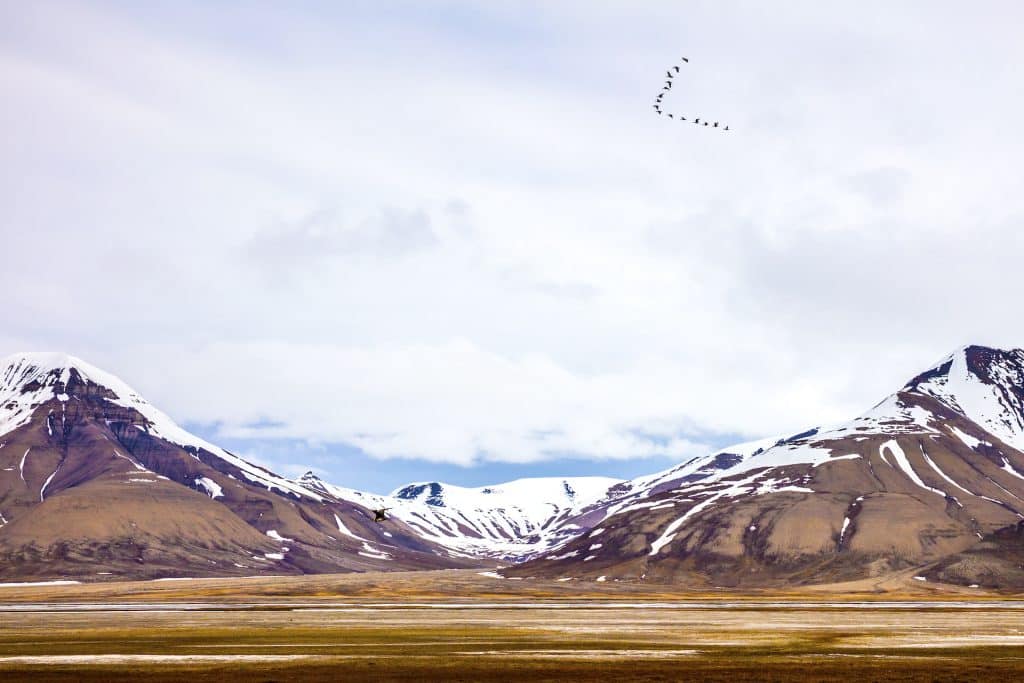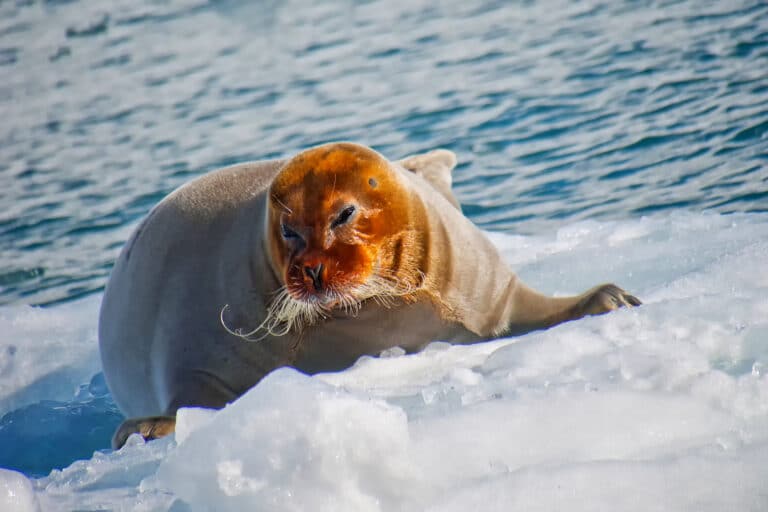Svalbard's diverse ecosystem is a testament to the adaptability and resilience of nature. From its hardy Arctic plants to its unique wildlife and rich marine life, this remote archipelago offers a fascinating study into the incredible biodiversity found in the world's most extreme environments. Despite the challenges posed by climate change, Svalbard continues to thrive, its rugged landscapes and resilient inhabitants a beacon of endurance in a rapidly changing world.
Against the backdrop of majestic glaciers, dramatic fjords, and snow-dusted mountains, you’ll find an ecosystem that is as resilient as it is varied. From hardy plants hugging the cold ground to the fascinating wildlife that roams the icy landscape and the surrounding seas, Svalbard is a living testament to the wonders of adaptation and survival.

Though it may seem unlikely, given the archipelago’s harsh climate and frozen terrain, Svalbard is home to approximately 165 plant species. This includes a variety of mosses, lichens, and vascular plants. The short growing season and harsh conditions have led to the evolution of plants that are perfectly adapted to the Arctic environment. A closer look at the landscape reveals a world of botanical wonders that have mastered the art of survival in a land of extremes.
Common species such as the Arctic willow, purple saxifrage, and Svalbard poppy add dashes of color to the stark landscape during the brief Arctic summer. The majority of vegetation in Svalbard is found in the wetter, low-lying areas where there is enough moisture and some shelter from the punishing winds. The plants here have evolved a myriad of strategies to survive, including growing close to the ground to avoid the wind and storing energy in their roots to survive the long winter.

Despite the challenging environment and extreme climate, a diverse range of wildlife has managed to make Svalbard their home. This includes several iconic Arctic species, each adapted in its own way to the tough conditions.
Polar bears: Svalbard is often referred to as “The Realm of the Polar Bear,” and for good reason. With a population of around 3,000, polar bears are a common sight in the archipelago. These magnificent creatures are superbly adapted to life in the Arctic, with their white fur providing camouflage against the snow and ice, and their layer of blubber offering insulation against the cold.
Arctic foxes: These resourceful predators are found throughout Svalbard. With their thick, white winter fur, they blend in perfectly with the snowy environment. During the summer, their coat changes to a brownish-grey color, providing camouflage against the rocky landscape. Arctic foxes are opportunistic eaters and will consume everything from birds’ eggs and chicks to small mammals and carrion.
Reindeer: The Svalbard reindeer is a unique subspecies. These animals are smaller and shorter-legged than their mainland relatives, an adaptation thought to conserve energy in their harsh environment. In the summer, they feed on the sparse vegetation, building up fat reserves to help them survive the long, harsh winter.
Seabirds: Svalbard’s cliffs and coastlines are teeming with numerous seabird species during the breeding season, including puffins, guillemots, and kittiwakes, among others. These birds arrive in great numbers, their cacophonous calls echoing across the cliffs as they nest and rear their young. The surrounding waters, rich in fish and other marine life, provide an abundant food source for these avian inhabitants.

Svalbard’s surrounding waters are as abundant in life as the islands themselves. The cold Arctic waters are home to a variety of marine mammals and fish. Whales, including the majestic blue whale, the largest animal ever to have lived, as well as minke and beluga whales, can be spotted off Svalbard’s coasts. Seals, including ringed, bearded, and harp seals, are common, especially around the ice floes. Walruses, with their distinctive tusks and whiskers, can also be spotted lounging on the shores.
The waters also teem with a variety of fish species, including Arctic cod, which play a crucial role in the food chain. The presence of these marine creatures in turn supports the islands’ populations of seabirds and polar bears, underlining the interconnectedness of Svalbard’s ecosystem.

Despite its remote location, Svalbard is not untouched by the impacts of human activities. Climate change poses a significant threat to its delicate ecosystem. Rising temperatures are leading to shrinking ice caps and thawing permafrost, which could have far-reaching effects on the local flora and fauna. Research and conservation efforts are ongoing to protect and preserve this unique environment and its inhabitants for future generations.
